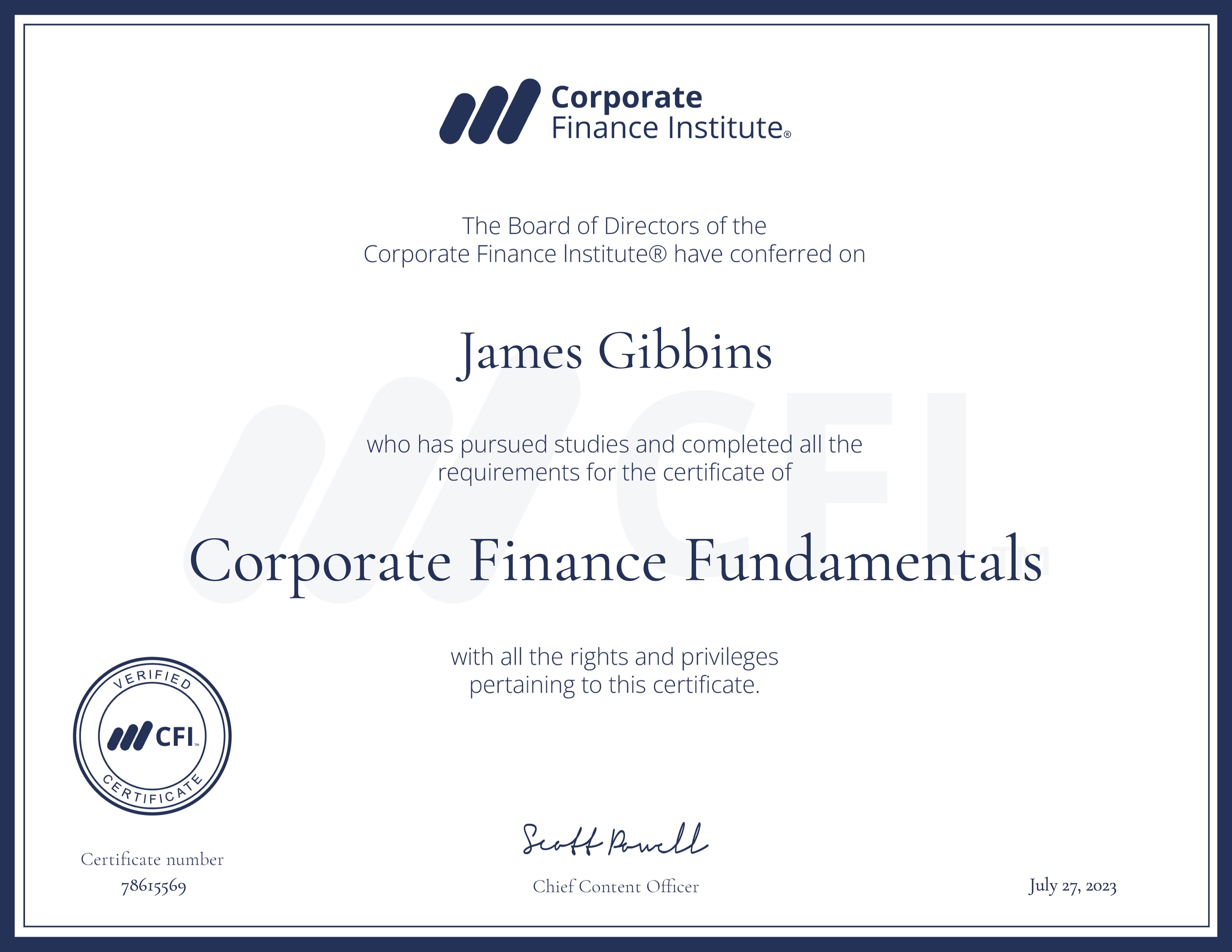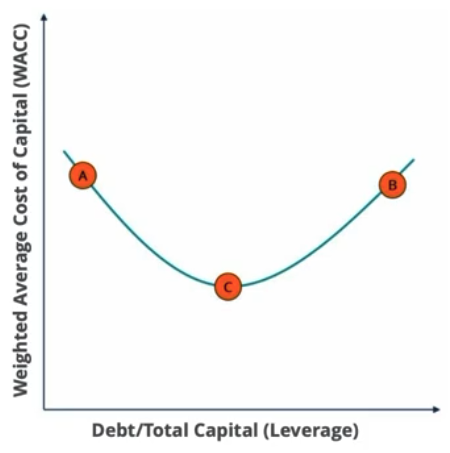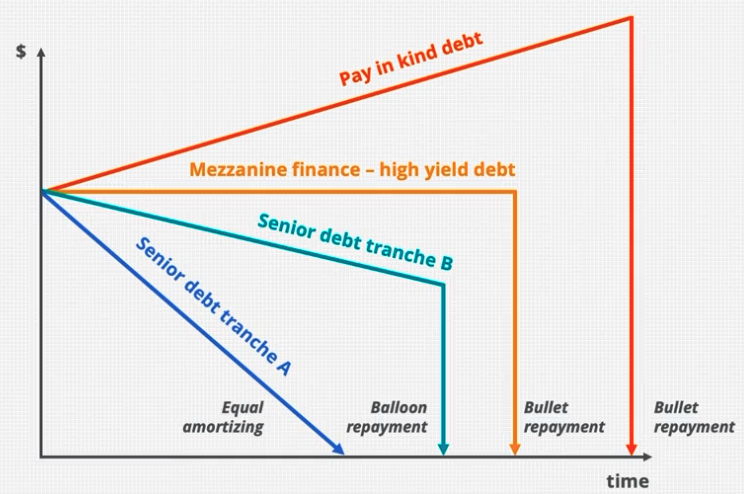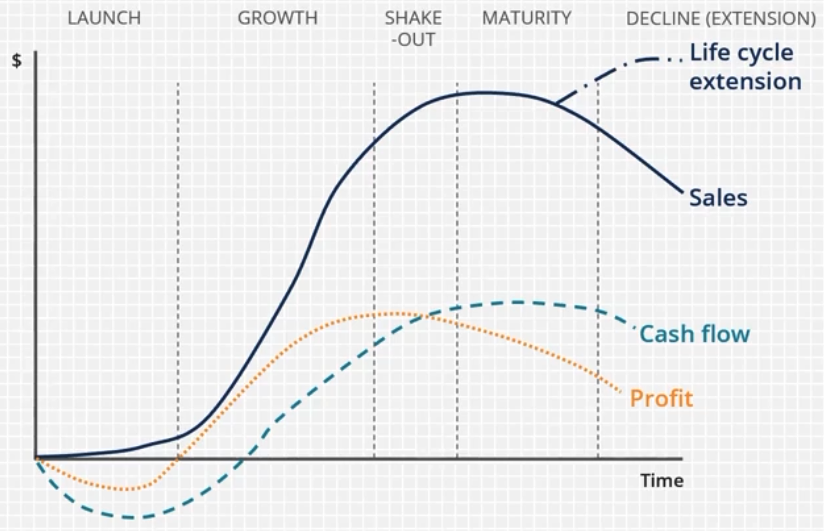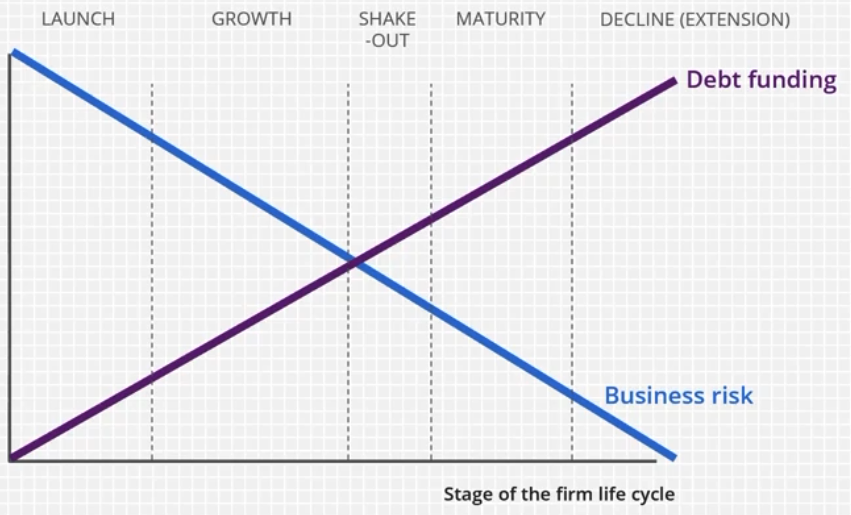Corporate Finance Fundamentals (CFI)
https://corporatefinanceinstitute.com/course/corporate-finance-fundamentals/
https://www.credential.net/78615569
Introduction
Primary market
- Buy side: institutions/investments
- Sell side: investment banks
- Corporations: exchange bonds/shares for capital
Secondary market
- Fund managers buy/sell at stock exchange through investment banks
Capital Investment
Creates economic benefit greater than one year
Increase assets
Calculations
NPV = FV/(1+r)^n
Note: Excel =NPV is different from manual calculation → “Excel NPV formula assumes that the first time period is 1 and not 0. So, if your first cash flow occurs at the beginning of the first period (i.e. 0 period), the first value must be added to the NPV result, not included in the values arguments (or use XNPV).”
Terminal Value (growing perpetuity formula) = FCF*(1+g)/CoC-g → CoC = discount rate = risk-free rate → risk go up, value down
Terminal Value (using metrics) = Metric (Earnings, EBITDA, Revenue) * Multiple
Enterprise value = Equity value (= share price * shares) + debt - cash = NPV of business
IRR: equivalent to compound annual growth rate, can be used to set NPV of CFs to equal 0
M&As
M&A process:
- Strategy
- Criteria
- Search
- Approach
- Evaluation and valuation
- Negotiation
- Due diligence
- Contracts
- Financing
- Integration
Strategic buyers (expansion or operational synergies) or financial buyers (private equity, professional investor, high leverage)
Standalone value + [hard synergies (cost savings) + soft synergies (revenue enhancements) - transation costs] = standalone value + net synergies = price paid (consideration) + value created
Capital financing
Capital structure = debt vs equity (high leverage = high debt:equity)(equity + debt = assets)
WACC (%) = cost of equity * % equity + cost of debt * % net debt
Risk and returns, high → low: Equity (common shares > preferred shares > shareholder loans) > subordinated debt > senior debt
Equity
Sources: private (founders, PE, VC, LBO) vs public (institutional, retail)
Shareholder loans pay interest but no dividend; preferred and common shares pay dividends, preferred has priority
Debt
Benefits: for corporation: can lower CoC, avoid equity dilution; for investor: can increase return
Assessing debt capacity: EBITDA, volatility, ratios (debt:X, X:EBITDA), …
Senior debt: revolver, term loans → usually 2-3x EBITDA, required 2x interest coverage
Subordinated debt: bonds, mezz, notes → some dilute equity
Credit ratings: investment grade: Baa3/BBB-/BBB (low) and above; high yield/junk bonds: Ba1, BB+, BB (high) and below
Comparison
| Equity | Debt | |
|---|---|---|
| Interest / mandatory fixed payments | No | Yes (typically) |
| Repayments / maturity | No | Yes |
| Ownership | Yes | No dilution |
| Control | Degree of control, voting rights (typically) | Requires covenants and financial performance metrics that must be met |
| CoC | Higher | Lower |
| RoR | Higher (dividends + capital appreciation) | Lower |
| Claim on firm’s assets if liquidation | Last | First |
| Operational flexibility | Maximum | Restrictions |
| Can push a firm into bankruptcy |
Underwriting
Bank raises capital for corporation as debt/equity securities
Firm commitment (underwriter buys and sells) vs best efforts (underwriter sells on behalf of corporation)
IPO: usually with some discount to ensure after-IPO trading and reduce the risk of equity overhang
Dividends and return of capital
Earnings: distribute vs retain → e.g. if CoC > IRR, repurchase shares or pay dividend, else retain and reinvest
Share buyback increasees EPS; paying dividend (if regular) increases yield

